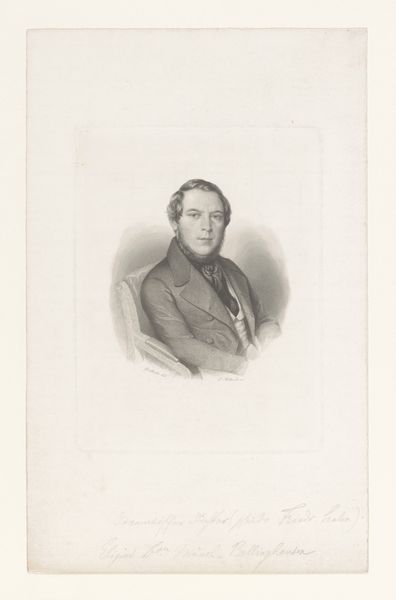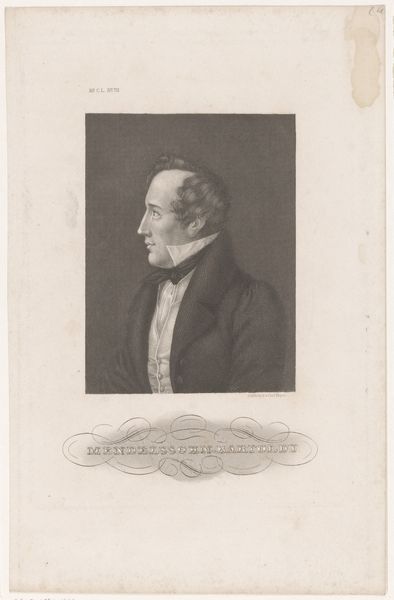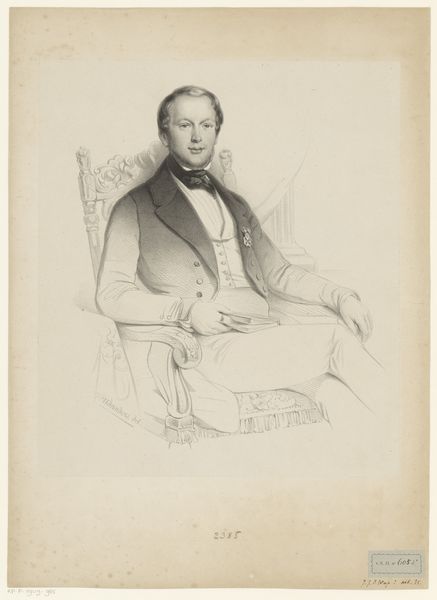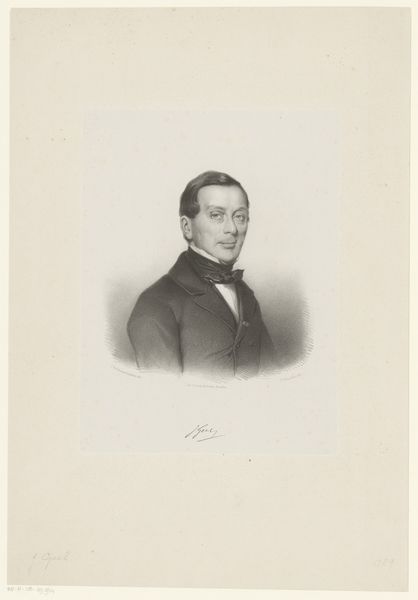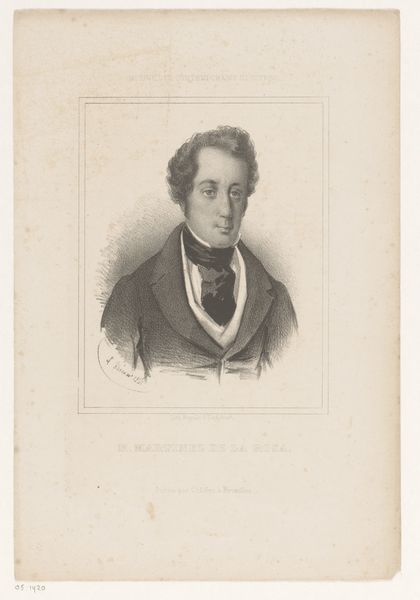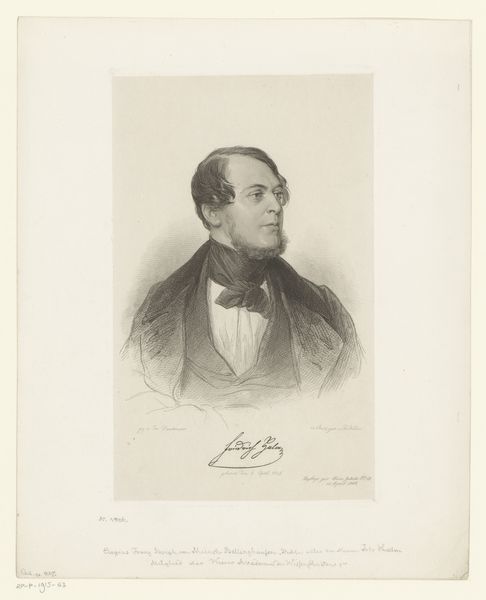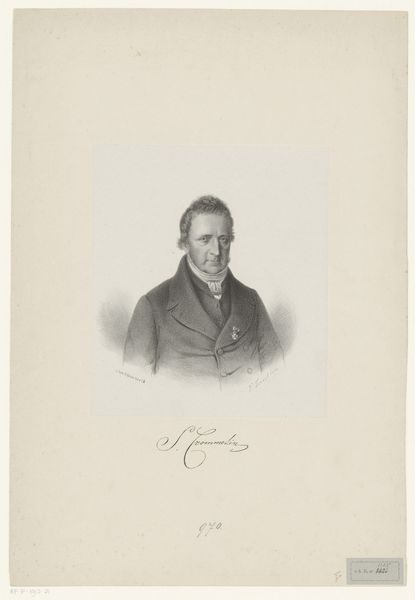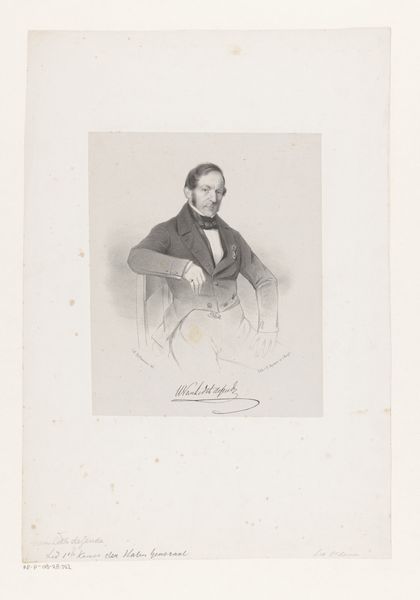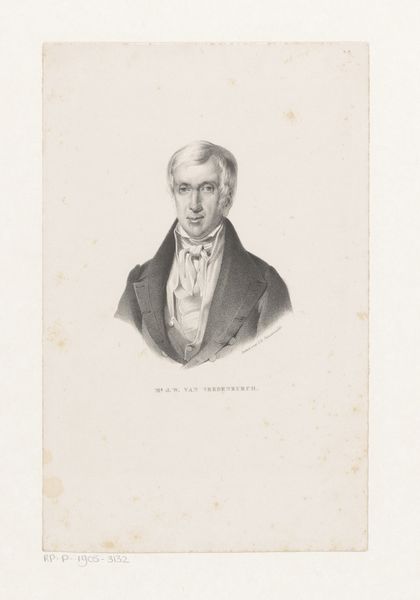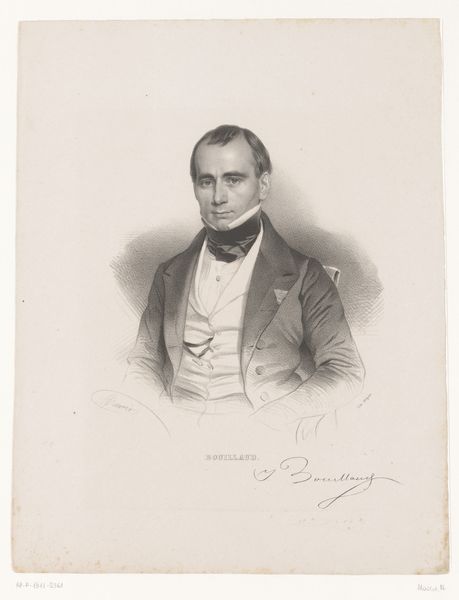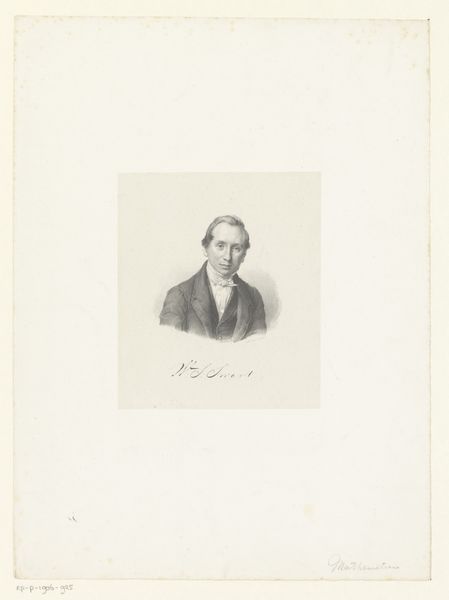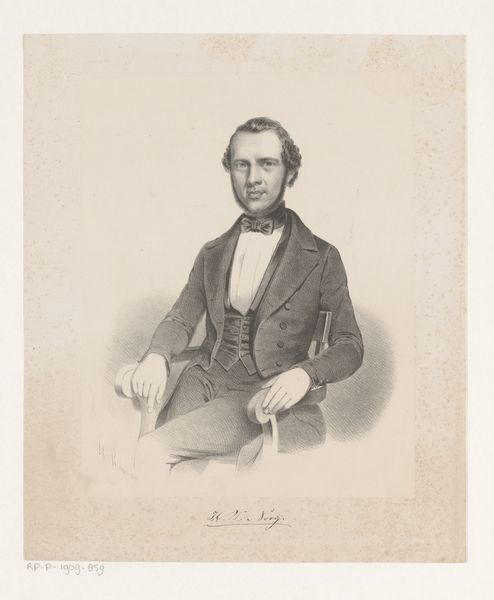
drawing, engraving
#
portrait
#
drawing
#
caricature
#
pencil drawing
#
romanticism
#
portrait drawing
#
engraving
Dimensions: height 170 mm, width 122 mm
Copyright: Rijks Museum: Open Domain
Curator: Before us, we have "Portret van Adolf von Tschabuschnigg," created sometime between 1810 and 1859 by Carl Kotterba. This work is presented as an engraving and drawing, a fine example of portraiture from the Romanticism period. Editor: The first thing that strikes me is the stark contrast. The precision of the lines creates an almost unsettling realism. There's an intensity in his gaze that feels both powerful and vulnerable. It's captivating, but also a little intimidating. Curator: Considering the historical context, portraiture of this kind served to solidify social standing. Note the meticulous detail given to his attire. It speaks volumes about Tschabuschnigg's status and the artist’s ability to capture not only his likeness but also his societal position. It's a curated representation of power, mediated through the lens of Romantic ideals. Editor: And what's so interesting is how that representation plays with contemporary notions of identity. How much of the "real" person is actually there versus the carefully constructed image designed for public consumption? The slightly severe expression—is that intentional? Is it him? Or is it Kotterba’s interpretation of what power looks like? There is something of a cold detachment about the character and this style. Curator: The engraving and drawing medium lent itself to detailed replication and distribution. This brings into focus questions about accessibility and the democratizing potential of art. Who had access to this image? How did it circulate, and what impact did it have on shaping perceptions of Tschabuschnigg? It really demonstrates how these works played a role in building and maintaining political power in society. Editor: That focus on dissemination raises pertinent questions about the agency of both the subject and the artist. To what extent did Tschabuschnigg have control over how he was portrayed, and how did Kotterba negotiate the expectations and constraints imposed upon him? Those nuances always have relevance in today’s media saturation and what kind of influence that gives or takes from a subject. Curator: I think engaging with these portraits also offers insights into how values have shifted. While this portrait celebrates the subject's prestige, it prompts us to reflect critically on how these values are sustained in contemporary social structures. Editor: Absolutely. It reminds us that art, even from seemingly distant historical moments, can stimulate critical conversations about enduring themes of power, identity, and representation that remain as relevant today. It's interesting to notice our perspectives in comparison to this portrait, like we too are posing in front of an engraving.
Comments
No comments
Be the first to comment and join the conversation on the ultimate creative platform.
